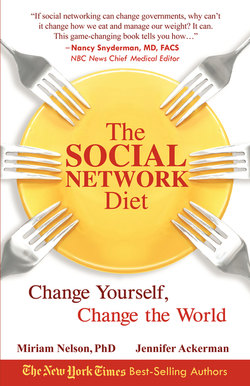Читать книгу The Social Network Diet - Michael Bertoldo - Страница 7
На сайте Литреса книга снята с продажи.
YOUR SURROUNDINGS
ОглавлениеWhile our social network and genes play a powerful role in our health, it’s not only who our parents are and the company we keep that makes it hard for us to eat well and stay fit. Our larger environment also plays a part, from our food supply to our physical surroundings.
When Neelam Sharma moved to South Central Los Angeles with her two young children in 1996, she discovered a dismaying problem: “I wasn’t really able to access what I thought was good, affordable, high-quality food.” South Central L.A. is a low-income area with a population of about 1.36 million. Neelam observed that residents in her community had little or no access to fresh fruits and vegetables and other healthy foods. There was no supermarket within walking distance. “I really resented having to drive so far to get basic food items,” she says. She had grown up in England and recalled working in the family garden with her father. “I remember growing berries and spinach; some basic items we used for Indian cooking were always grown in the backyard.” The lack of access to healthy food in her new neighborhood shocked her.
South Central L.A., like other low-income areas in this country, has been what some experts call a “food desert”—a densely populated community with a scarcity of supermarkets but an abundance of convenience stores and fast-food restaurants. In these areas, residents may have to travel miles to reach a well stocked, full-service grocery store where fresh produce and other high-quality, healthy food is readily available at lower prices. (Convenience stores have prices that can be as much as 76 percent higher than those found at grocery stores and they rarely carry fresh produce.)
Easy access to supermarkets is linked with healthier eating. For example, a study of African Americans found that those who lived in neighborhoods with full-service grocery stores ate more fruits and vegetables than those in neighborhoods without these stores. On the flip side: The absence of fresh-food markets in neighborhoods is linked with higher body mass index, especially for low-income Americans. So too is a high density of fast-food restaurants and convenience stores. These “food desert” neighborhoods often have high rates of obesity and diet-related diseases.
The problems in South Central L.A. are not unique. They’re emblematic of the challenges that face us all over this country: Our food supply—fast, cheap, convenient, but often unhealthy—makes it hard for us to eat well and creates what many of us call a “toxic” food environment. These toxic environments can be in urban, suburban, or rural areas.
American Idle
Much of the focus on our struggles with weight has centered on food intake. But lately, researchers have begun to look at other factors affecting the weight-gain equation: our low levels of physical activity, for instance. If our food environment makes it hard for us to eat well, maybe there’s something about our physical environment that makes it hard for us to get sufficient physical activity.
Whether or not we’re active is certainly determined in part by personal factors: our own propensity for exercise, for instance, and our willingness to make time for it. Genes affect how exercise makes us feel; social networks can exert pressure for or against regular exercise. We’re learning now that our physical surroundings may also influence whether we lead active lives: Our jobs, homes, even the design of our communities can either encourage or hinder physical activity as a part of daily life.
When Barbara McCann was a journalist working in Atlanta in the 1990s, she wanted to ride her bicycle to the office. The city, however, was “not a very good place to do that,” she recalls. Like Martha Peterson, she found Atlanta an environment somewhat hostile to healthy living. Streets had no bike lanes and there was little interest in creating them, which made biking hazardous and unpleasant. “The way the city approached transportation was extremely traditional, very automobile oriented,” says Barbara. Unfortunately, Barbara’s experience in Atlanta is all too common. Many of our communities have been engineered in ways that discourage biking, walking, and other kinds of routine physical activities.
The Physical Guidelines for Americans recommends getting 150 minutes of moderate intensity activity or 75 minutes of vigorous activity over the week to maintain health. Almost all Americans fall short of this goal. Children are the most active, but still only 10 percent or less meet the guidelines. With each decade of age, the percentage diminishes. Most active are highly educated people, as well as those who live in western states such as Washington, Colorado, and Oregon; least active are those who reside in southern states such as Kentucky, Louisiana, and Mississippi. A quarter of Americans report being completely inactive during their leisure time.
These statistics are distressing, but they’re not new. Levels of reported exercise haven’t changed much in decades. What’s different now is that we’re getting less physical activity in the course of our daily routines. We’re not moving as much in our jobs, in taking care of our homes, in commuting or running errands, or just going from place to place. An example of the decline in daily movement was revealed in a poll not long ago in which seven in ten Americans said they walked or rode a bike to school when they were children. Today, only one in ten school-aged children do so.
